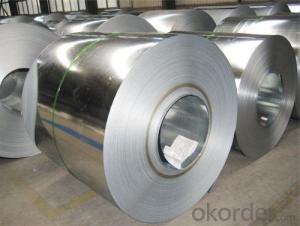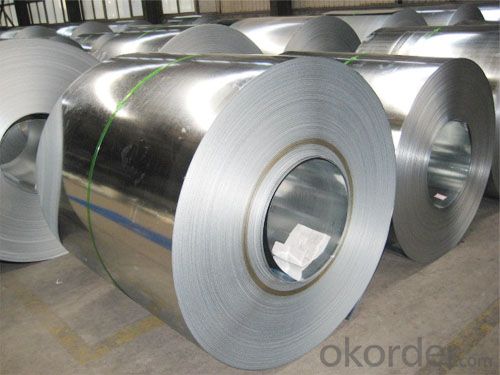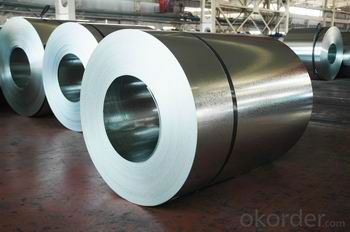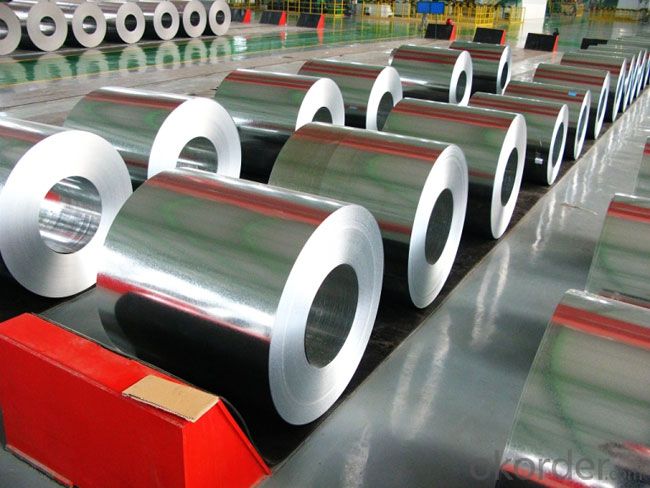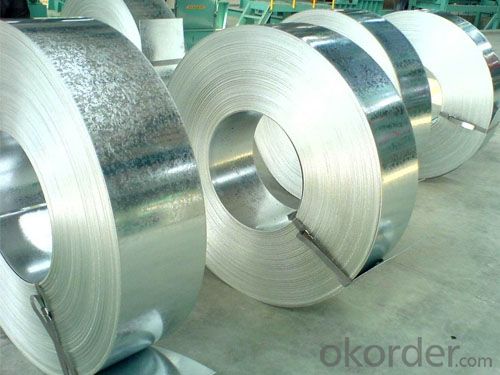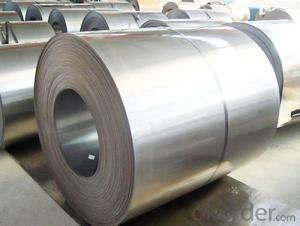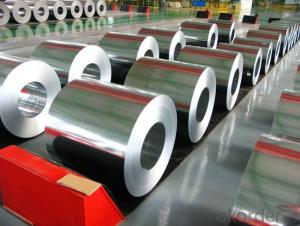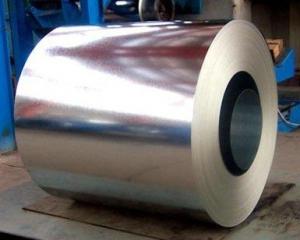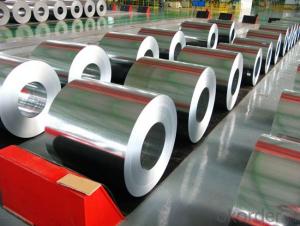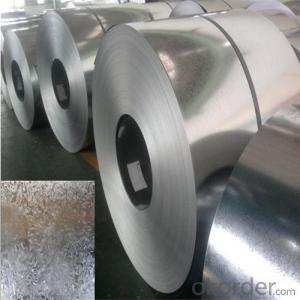HOT-DIP GALVANIZED STEEL COIL WITH SUPER HIGH QUALITY
- Loading Port:
- Shanghai
- Payment Terms:
- TT OR LC
- Min Order Qty:
- 50 m.t.
- Supply Capability:
- 5000 m.t./month
OKorder Service Pledge
OKorder Financial Service
You Might Also Like
Quick Details | |||||
Standard: | AISI,ASTM,BS,DIN,GB,JIS | Grade: | SGCC,DX51D/DX52D/S250,280GD | Thickness: | 0.12-4.0 mm |
Place of Origin: | Brand Name: | N/M | Model Number: | ssp-226 | |
Type: | Steel Coil | Technique: | Cold Rolled | Surface Treatment: | galvanized/ Galvalume/zinc coatting |
Application: | strong anti-corrosion ability,cold bending molded manufacturablity | Special Use: | High-strength Steel Plate | Width: | 600-1250 mm |
Length: | in coil | product: | g40 prime/secordary hot-dip galvanized cold rolled steel coil/sheet | ||
Packaging & Delivery | |||||
Packaging Detail: | standard export package,Other types of packing can be customized as per client's requirement. | ||||
Delivery Detail: | as per client's requirements | ||||
Specifications
1.Mateials:SGCC,DX51D / DX52D / S250,280GD
2.Size:width:600-1250mm(900mm,1215mm,1250mm,1000mm the most common)
thickness:0.15-2.0mm
length:1000-6000mm,as your require
3.Zinc coating :60-180g( as required)
4.Coil id:508mm
5.Coil weight: 3-5MT(as required)
6. Surface:regular/mini/zero spangle, chromated, skin pass, dry etc.
7. Application:
With excellent cold bending molded manufacturablity, good decoration effect, strong anti-corrosion ability, galvanized steel coils and sheets are also pollution-free and easily recycled. Accordingly, they can be used as final products and basic plates of color coated steel coils.
8.Packaging Details:
Standard export package.
Other types of packing can be customized as per client's requirements.
- Q: How are steel coils used in the HVAC industry?
- Steel coils are commonly used in the HVAC industry for heat transfer purposes. They are typically used in air conditioning and refrigeration systems to transfer heat between the refrigerant and the surrounding air. The coils are designed to efficiently absorb or release thermal energy, allowing for effective cooling or heating.
- Q: What are the different methods of testing steel coils for quality control?
- There are several methods of testing steel coils for quality control, including visual inspection, dimensional measurement, chemical analysis, mechanical testing, and non-destructive testing. Visual inspection involves examining the surface of the coil for any defects or imperfections. Dimensional measurement ensures that the coil meets the specified size and thickness requirements. Chemical analysis involves testing the composition of the steel to ensure it meets the required standards. Mechanical testing involves assessing the strength, hardness, and other mechanical properties of the steel. Non-destructive testing methods, such as ultrasound or magnetic particle inspection, are used to detect internal defects or flaws in the coil without damaging it.
- Q: How are steel coils used in the manufacturing of railroads?
- Steel coils are used in the manufacturing of railroads as they serve as a primary raw material for producing railway tracks. These coils are processed and cut into appropriate lengths, then shaped into rails through a series of rolling and forging techniques. The resulting rails provide the necessary strength, durability, and stability required to support heavy loads and withstand the wear and tear of train traffic.
- Q: Yes, I understand it can weaken steel greatly. But can it MELT steel? (key word: melt)
- Not likely -- the melting point of steel is about 1500 degrees Celsius, while the hottest jet fuel burns at is about 825 degrees Celsius (and its usually way below that). If you're one of those people wondering why the collapse in 9/11 ... it's quite possible that the temperatures and heat inside the buildings were way about the melting point of steel in some places. But it would not be just because of burning jet fuel. And, planes carry a lot of material that can catch fire at relatively low temperatures, but which can give off a huge amount of heat (and reach high temperatures), which would contribute to melting and burning of mild steel.
- Q: How are steel coils used in the production of automobile frames?
- Steel coils are used in the production of automobile frames as they are unrolled and shaped into the desired form to create the structural framework that provides strength and rigidity to the vehicle.
- Q: Edward Humphrey wants to know... Can I use steel roofing on an older house?
- steel roofing is a very logical option when considering replacing a residential roof. Keep in mind that in addition to the cost of the actual metal roofing panel, most likely, in order to qualify for the warranties associated with these products, you must also use their accessories and adhere strictly to their installation instructions. If you have a very cut up house, lots of dormers and valleys, etc, the costs to waterproof these areas before installing can get to be costly, but as far as a straight forward reroof over existing substrate, costs are very competitive. As much as I see a lot recommend going over existing shingles, I prefer to strip the existing shingles, and check the sheathing, before waterproofing and roof installation.
- Q: What are the different types of steel coil storage locations?
- There are several types of steel coil storage locations, including outdoor yards, warehouses, racks, and shelves.
- Q: What is the purpose of coating steel coils?
- The purpose of coating steel coils is to provide a protective layer that prevents corrosion, enhances durability, and improves the overall appearance of the steel.
- Q: Personally, I like Steel Cage matches to end in pinfalls. One of the biggest selling points of a Cage match is that it is to keep the competitors in and keep others out; essentially ensuring that it's a 1 on 1 match. As a result, I believe that pinfalls or submissions are important - but I know there's a lot of people that believe cage matches should only end in escape. What do you think??
- Escape. It is more fun to watch and gets fans adrenaline pumping
- Q: How are steel coils used in the production of storage tanks and silos?
- Steel coils are used in the production of storage tanks and silos as they provide the necessary structural strength and durability required for these storage structures. The coils are formed, cut, and welded into the desired shape to create the walls and roofs of the tanks and silos. This ensures that the storage vessels can withstand the weight of the stored materials and any external forces exerted on them.
Send your message to us
HOT-DIP GALVANIZED STEEL COIL WITH SUPER HIGH QUALITY
- Loading Port:
- Shanghai
- Payment Terms:
- TT OR LC
- Min Order Qty:
- 50 m.t.
- Supply Capability:
- 5000 m.t./month
OKorder Service Pledge
OKorder Financial Service
Similar products
Hot products
Hot Searches
Related keywords
